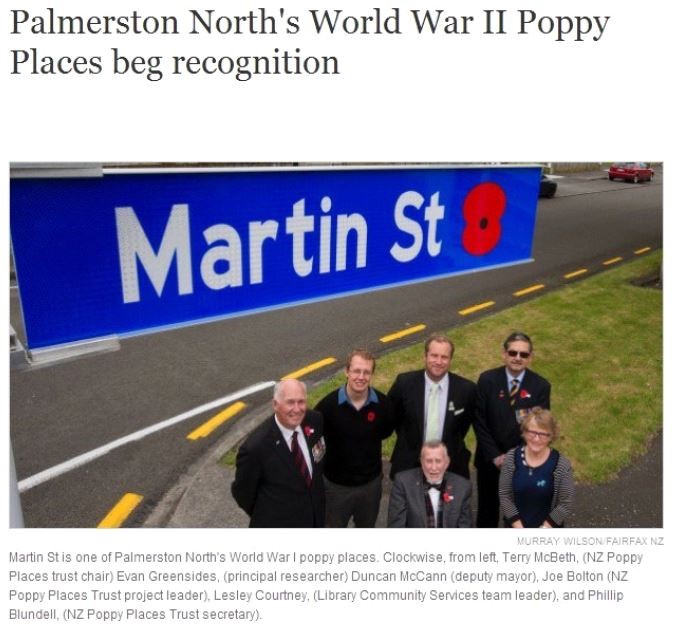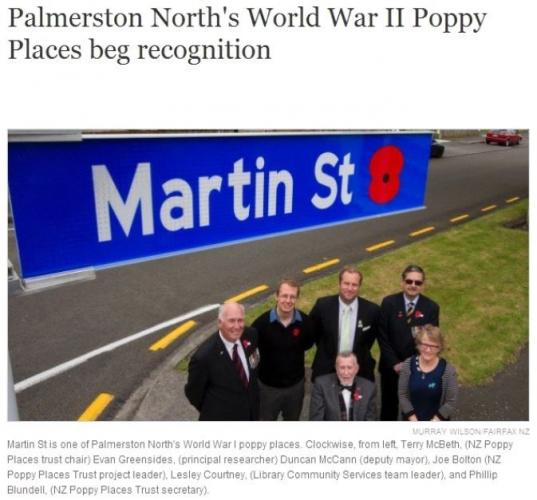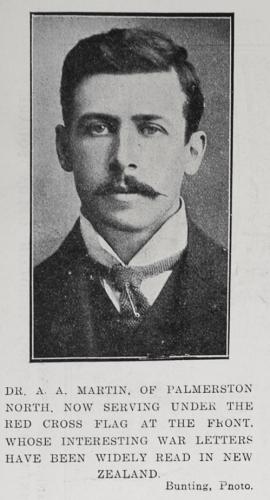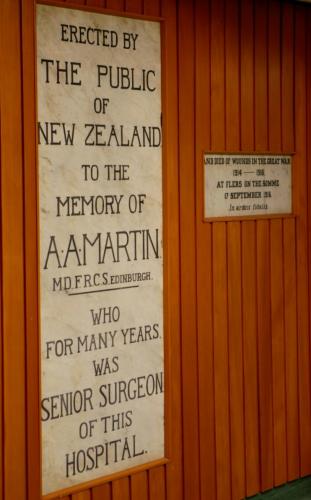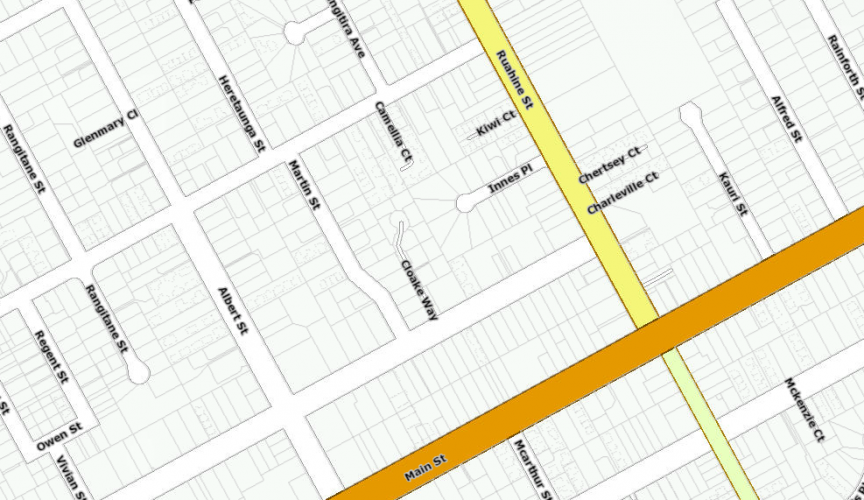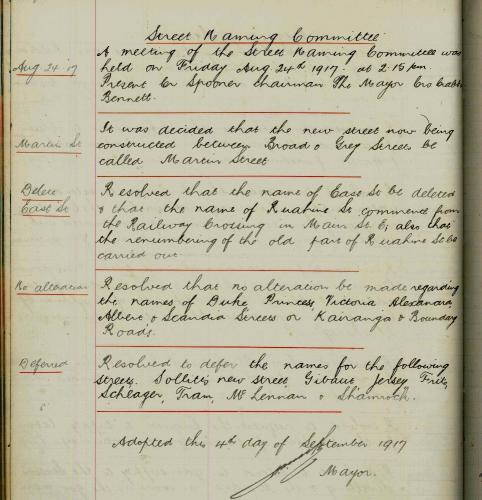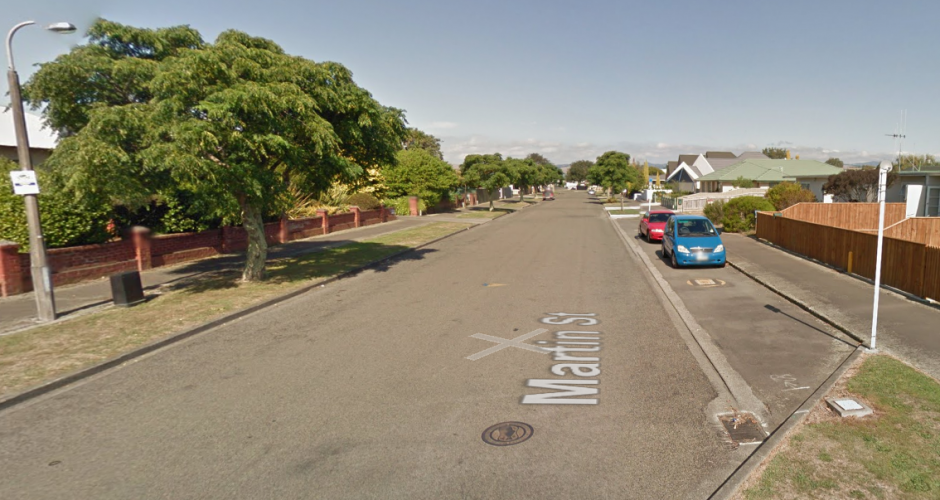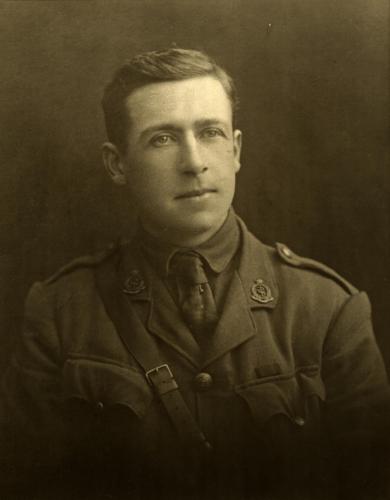032 Martin St Palmerston North, street scene 2017
Reason for the name
Martin Street, which was named in honour Palmerston North doctor, Arthur Martin, a gifted war surgeon on the Western Front
Martin Street, which was named after Palmerston North doctor, Arthur Martin, a gifted war surgeon on the Western Front, started life as a track connecting Broad Street (now Broadway Avenue) and Grey Street. Construction on footpaths and paving of the road began in 1915, and the Catholic Authorities, who had ownership rights over the area, applied to the Palmerston North City Council for a one year extension to complete the new street in April 1916. It appears the footpaths were made very wide, as a clause in the extension agreement mentions reducing their width from 12 feet to 9. The street was completed in mid-1917, and a suggestion to Council to name the new street after Dr Arthur A Martin, a Palmerston North local and author of ‘A Surgeon in Khaki’ was accepted on 4 September, just before his death at Amiens. The street is primarily a residential area and is located close to both Carncot and Terrace End schools.
Author: Evan Greensides, Palmerston North Libraries and Community Services.
Arthur Anderson Martin was born in Milton, Otago, New Zealand, on 26 March 1876, the son of Thomas Martin, a labourer, and his wife, Jessie Anderson. Martin was educated at Lumsden School and Lawrence District High School and placed highly in civil service examinations. In 1894, Martin began a medical degree at the University of Edinburgh, being lauded by his contemporaries as a brilliant mind in his field of practice. After graduating with an MB in 1900, he left for the Boer War as a civil surgeon in the South African Field Force.
Martin returned to New Zealand in 1903 and began general practice in Palmerston North, being appointed surgeon at the hospital in 1904. He was situated in Palmerston North for the next eight years, but his wide medical interests and surgical dexterity won him a reputation usually only accorded to specialists in large city hospitals. Locally, Martin did much to foster scientific interest by giving lectures, through involvement in the development of an observatory, and writing on medical subjects, such as the surgery and treatment of cancer. By 1911 Martin had gained considerable support for his scheme for the development in Palmerston North of the only radium institute in the North Island.
Dr Martin left for Europe in the early part of 1914 for the purpose of furthering his radium institute scheme. On the declaration of war he was in Scotland, immediately volunteering his services and spending eight months with a first-line ambulance service. He was present at the retreat from Mons and the battles of the Marne and the Aisne, eventually being transferred to the Ypres front.
In 1915 he returned to New Zealand for rehabilitative rest. However, after a severe outbreak of measles, pneumonia and cerebrospinal meningitis at Trentham he was immediately appointed to investigate accommodation and hospitalisation at the camp. Dr Martin also made a brief return to civilian practice in Palmerston North and was tireless in his military endeavours, being active in training the Rifle Brigade Field Ambulance at Awapuni. He returned with the Brigade to France and was back in front-line service on the Somme front.
Dr Martin was wounded near Flers on 17 September 1916, and was evacuated to Amiens base hospital where he died that night. The loss of two of New Zealand's most promising surgeons, Gilbert Bogle and Arthur A Martin, on the same day led to the issue of orders for much more caution by doctors under fire than Martin had advocated. The death of a gifted surgeon was mourned in newspapers throughout New Zealand on 20 September:
‘Dr Martin was a man of the greatest mental and bodily vigour, as his book, “A Surgeon in Khaki” abundantly testifies. He was noted for his contempt of danger, and could never be induced to remain long away from the firing line, where he loved to work amid the din and excitement of battle. His published work is a vivid record of things seen, and as such created a great deal of interest at Home, running through a number of editions.’
Honours and Awards
On 1 January Dr Martin was posthumously awarded a Distinguished Service Order. In July 1920, at Palmerston North Public Hospital, a memorial wing to Martin was opened with facilities for X-ray and bacteriological research. There is a memorial tablet from the Palmerston North division of the British Medical Association in the hospital and tablets and a flag to the memory of Martin in All Saints' Church, Palmerston North.


